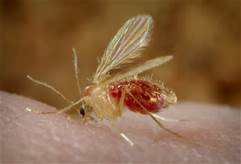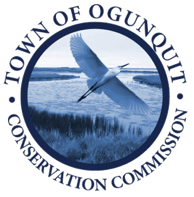
We talked last week about meiofauna – those tiny creatures that live between grains of sand on the beach, and how they are essential to the cleanliness of our beach by aiding in the decay of organic matter and to the food chain, but what lives on the beach – aside from our many birds and the occasional tourist for a night?
Often we have seaweed wash up on the beach, but although seaweed doesn’t grow in beach sand since seaweed needs to be attached to something, usually rock near beaches, seaweed teems with life.
You’ve probably noticed tiny flies buzzing around piles of beached seaweed; these are kelp flies, dining on the rotting seaweed, and relatives of those pesky flies that love to buzz around your snacks and drinks while you’re relaxing in your favorite chair outside in the summer.
Of course they can be annoying, but not as nasty as sand fleas. Like our friends, the meiofauna, sand fleas feed on decaying seaweed on the beach, and if you’re close enough to the little buggers, you’re likely to be bitten.
That is, likely to be bitten if you’re on the beach and near their seaweed hangouts around dawn or in the evening; if you’re enjoying a beach day in the sun, then you probably don’t have to worry about being nibbled on.
But if you’re close to where they are at dawn or dusk, then you can be sure that these sand fleas might jump onto your bare feet, ankles, or legs and then snack, and they can be like black flies, relentless and maddening.
It’s the female who might suck some blood for the protein so she can lay her eggs, and you might figure you’ve been bitten by a mosquito, since sometimes this tiny bug can leave a rash or swelling that might be with you for days, and of course it will be very itchy. Some people even get a fever. You’ll be tempted to give the swelling a good scratch or two, but the more you scratch, the longer the swelling will be with you and your scratching might also cause infection.

What eats these sand fleas? If you’re on the beach, especially early in the morning, you might notice our special guests, the federally and state protected, piping plover is nabbing something in the seaweed – they love these sand fleas, and you know they have to eat a whole lot in order to get the food they need.
Our conservation measures allow a certain amount of seaweed to be removed by our town crew, especially in the area where most of the beach goers are, and leave some on the beach in the wild area, but if the seaweed becomes too much as it occasionally does, then measures can be taken for its removal to ensure a beach safe from potentially dangerous bacterial growth – and too many sand fleas for even our plovers’ dining needs.
The kelp flies and sand fleas are perhaps the most numerous of our beach bugs here in Ogunquit.
